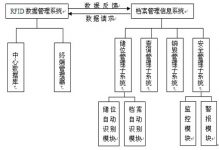
The Application of RFID Technology in File Management
[ad_1]
1. System background
In recent years, my country’s archives industry has made great progress. The scale of archives industry has expanded and the number has increased day by day. The types of archives have become increasingly diversified, and the amount of information has expanded rapidly. However, the problems caused by traditional file management methods and technologies have become increasingly prominent:
(1) The traditional manual file cataloging process is cumbersome and inefficient, and the organization time is long
(2) The order of file storage is easy to be disrupted and difficult to find
(3) The types of files are complex and time-consuming to look up
(4) The inventory operation of archives is unscientific, and most of them stay on the inventory of archive boxes
(5) The management of invalid files is lagging behind, and a large number of redundant files are formed, which increases the management load and cost.
In view of this status quo, technical upgrading and transformation of archives management is imminent. As a new generation of material tracking and information identification, the rapid development of RFID (Radio Frequency Identification Technology) technology has brought the possibility of automation and intelligence in file management, and has unparalleled superiority in other methods.
2. Introduction to RFID technology
RFID (Radio Frequency Identification), or radio frequency identification, is an automatic identification technology that emerged in the 1990s. A typical RFID system consists of three parts: a radio frequency electronic tag, a reader or reader, and an antenna. It is a comprehensive technology that integrates multiple technologies such as coding, carrier, identification and communication. The main principle is the process of using radio waves to read, write and identify a marked medium. Non-contact is its obvious feature. In practical applications, the reader writes data in a specific format into the RFID tag, and then attaches the tag to the surface of the object to be identified. The reader can also read and identify the electronic data stored in the electronic tag without contact, so as to realize the functions of long-distance, contactless collection and wireless transmission of object identification information.
Three, system overview
CANTECHS archive warehouse management system is developed by Kaitai Technology Company, which is specially designed for the management of archive warehouses in various industries. The hardware is exquisitely designed, sturdy and durable, and has high practicability; the software operation is intuitive and concise. Large-scale integrated circuits and SMD production methods ensure the reliable quality of products. Since its launch on the market, the file warehouse management system has received unanimous praise from users for its simple method of use and accurate calculation results. It has also been recognized by professionals for its operational safety and technological advancement. Its convenient and accurate query function has been appreciated by business leaders.
The use of this system can improve the work efficiency of archive warehouse management, inquiry, borrowing, and inventory, greatly reducing labor and time costs, improving the efficiency of review, and improving the management of borrowing.
The entire system consists of a handheld inventory terminal, card issuer, rfid reader, RFID asset tag and related software. The system takes the computer as the control center and high-performance hardware equipment as the foundation. The entire configuration has high security and reliability. Through the integration of RFID automatic identification radio frequency technology and traditional asset tags, the effective use of intelligent information products for archive warehouse management.
Four, system advantages
Non-contact data collection
Fast scanning, and a large amount of one-time data processing
The label information capacity is large, the service life is long, and it can be reused
High data security
Good label durability
Miniaturized label size and diversified shapes
Labels can be reused
Penetrating and barrier-free reading
Tag with EAS anti-theft function
Five, system composition
A set of automatic file management system based on RFID technology, which is mainly composed of RFID data management system and file management information system.

5.1 RFID data management system
The system consists of a central database and a terminal manager, which is the data access center and information input and output terminals of the system. The terminal manager includes a reader and a handheld reader, and is an important port for the central database to obtain and output information. The function of the reader is responsible for writing the information in the database to the label or importing the information in the label into the database; the handheld reader is the hardware for the administrator to collect and communicate on-site information, and the administrator imports the collected data to The central database provides data support for the use of various functions of the file management information system.
5.2 Archives management information system
The system consists of a storage location management subsystem, a query management subsystem, a destruction management subsystem, and a safety management subsystem. The storage location management subsystem is composed of the storage location automatic identification module and the archives automatic identification module, and the safety management subsystem includes a monitoring module and an alarm module.
The specific system is as follows:
Storage location management subsystem
Query management subsystem
Destruction management subsystem
Security Management Subsystem
To sum up, the RFID data management system and the archive management information system realize the connection between the systems through the system interface. The RFID data management system realizes the collection, storage, and reading and writing of electronic tags of archive data; the archive management information system realizes the archive information Application and management. At the same time, different permissions can be set for system users to realize the security management of users.
[ad_2]



